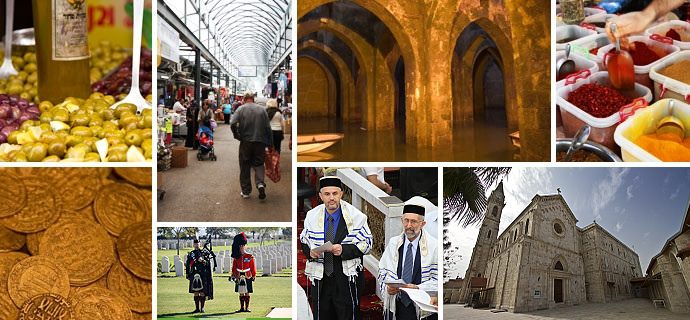Israel Antiquities Authority
The excavations were carried out at the entrance to Ramla, in an area where a bridge is slated to be constructed as part of the new Highway 44 being paved by the Netivei Israel Company * This is the first time that a fountain has been discovered outside the known wealthier districts of Old Ramla
Remains of an affluent estate that had a fountain in its garden were recently unearthed during the course of excavations in Ramla. The excavations were conducted south of Highway 44 as preparatory work by the Netivei Israel Company, prior to the construction of a graded separation over the railroad tracks and along the existing route where drivers suffer from a bottle neck and very long delays during rush hour.
A bridge and ramps will be built above the Lod–Na'an railway line in the region where the excavations took place. They will link Highway 44 with the cities of Ramla and Lod, while eliminating the traffic lights in the area of the project. A spokesperson for the Netivei Israel Company explains that the archaeological excavations there were part of the preparatory work within the framework of which traffic was detoured outside the area of the project and will include the construction of a new road and a bridge above an existing road and an active railway line. Approximately 250 million shekels will be invested in the project that is scheduled for completion in another two and a half years.

Two residential rooms were exposed of a wealthy estate that was built of ashlar stones. Archaeologists date the structure to the Fatimid period (late tenth century and first half of the eleventh century CE). A fountain made of mosaic covered with plaster and stone slabs was uncovered west of the building. A system of pipes consisting of terra cotta sections and connectors made of store jars led to the fountain. A large cistern and a system of pipes and channels that was used to convey water were discovered next to the residential building. A smithy’s forge built of bricks and used for manufacturing iron tools was exposed c. 20 meters south of the structure.
According to Hagit Torgë, excavation director on behalf of the Israel Antiquities Authority, “It seems that a private building belonging to a wealthy family was located there and that the fountain was used for ornamentation. This is the first time that a fountain has been discovered outside the known, more affluent quarters of Old Ramla. Most of the fountains that we are aware of from this period in Ramla were concentrated around the White Mosque, which was the center of the Old City of Ramla. In addition, this is the first time that the fountain’s plumbing was discovered completely intact. The pipes of other fountains did not survive the earthquakes that struck the country in 1033 and 1068 CE”.
It seems the entire area was abandoned in the mid-eleventh century CE, probably in the wake of the earthquake.
Ramla was established at the beginning of the eighth century CE. Its founding is ascribed to the ruler Suleiman Ibn 'Abd al-Malik, and it was built as the district capital (Jund Filastin) and in certain periods its importance even eclipsed that of Jerusalem. Ramla grew and expanded during the Abbasid and Fatimid periods, and it was an important economic center in Israel as a result of its strategic location on the road from Cairo to Damascus and from Yafo to Jerusalem.
Numerous oil lamps, a baby’s rattle and parts of dolls made of bone were discovered in the excavation area.
Upon completion of the archaeological excavation, the fountain, which was in an excellent state of preservation, was removed from the area and was relocated in the Pool of the Arches compound in the city where it will be displayed.









